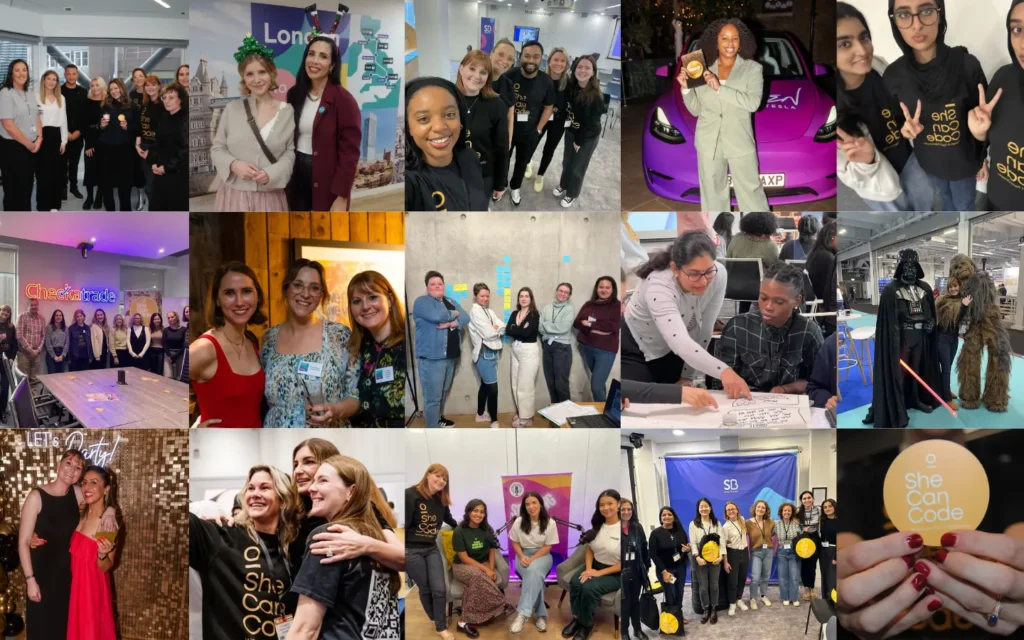Natalie Whittlesey, Director of C-Tech engagement at the The IN Group which includes specialist executive search brand InX and leading recruitment brand Investigo

Natalie has a long track record of hiring technology, digital, data, and transformation leaders at chief, director, and VP level. She headed the CIO practice for Harvey Nash and was a senior leader within Korn Ferry technology officers’ division.
Her expertise comes alive when shaping and building high-performing tech leadership teams. Natalie loves sharing all she’s learning with business and tech leaders by blogging, hosting events, and unpacking how the latest data can drive inclusive hiring strategies.
Diversity, Equity and Inclusion (DEI) should be embedded within every organisation, but too often DEI gets side-lined as a priority by the boardroom in place of chasing revenue growth, technology advancements or other commercial opportunities.
As a result, hiring and retaining a diverse workforce can get tucked under the remit of a leader lower down in the organisation who is fighting to be heard and have influence.
This is especially alarming considering 38 per cent of C-level executives feel their organisation is falling behind when it comes to diversity, a figure that rises to a staggering 48 per cent in the US, according to the Tech and the Boardroom survey.
DEI initiatives start in the boardroom and need to be significantly amplified through authentic sponsorship from top leadership in order to successfully achieve an inclusive and diverse workplace. Here’s how the boardroom can implement a successful DEI recruitment strategy.

Genuine sponsorship from the top is key
Although lower-level managers are often fighting to implement DEI recruitment strategies, they may not have the resources or influence within a company to lead them successfully. For a truly impactful DEI strategy, the executive team should be front and centre.
Executive teams must take ownership by actively promoting and participating in DEI initiatives, attending events and engaging with diverse groups within their companies to reinforce an inclusive workplace.
This ‘top-down’ approach matters, as organisations will feel empowered when seeing the involvement of the C-suite in DEI efforts.
The importance of defining clear goals
Before setting DEI initiatives, it’s essential for leadership teams to define clear goals in order to hold themselves accountable.
For example, is the goal to hit a percentage of diverse employees? Is the aim to increase diversity in certain areas of the business, such as in leadership roles or in new grads? Another goal might be recognising a particular characteristic that needs increased visibility.
Something all organisations should consider is what DEI means to them and if the focus is on visible diversity or diversity of thought – the two aren’t always linked.
Once these goals are established, actionable steps must be taken to achieve them. This may include implementing diverse hiring practices like only accepting diverse shortlists and ensuring diverse panels evaluate candidates. Additionally, organisations may put measures in place to rectify the gender pay gap or deliver interesting new training that meets people’s needs more effectively.
There are a plethora of solutions which companies can integrate into the recruitment process to ensure all is being done to increase DEI levels. Establishing diverse steering groups or shadow boards to generate and share these ideas throughout the process can prove particularly useful.
Measuring and promoting results
Measuring the effectiveness of DEI initiatives is essential for ongoing improvement and it’s the organisation’s responsibility to track progress and remain transparent about results. It’s the old adage ‘you can’t manage what you can’t measure’.
Acknowledging when efforts aren’t yielding desired outcomes and reassessing strategies is essential to harnessing successful DEI.
There isn’t a ‘quick fix’ when it comes to implementing successful DEI strategies and bringing in external eyes is likely to shift the perspective, offering a chance for organisations to spot issues which they haven’t noticed before.
Company policies need to align with DEI goals and work simultaneously. Having a policy is one thing, but people are led by behaviours, so the policies need to be put into action, led from the boardroom.
For example, if an organisation has an extended paternity leave policy, then men should be encouraged to take it without fear of judgment. Pre-existing ideologies can be damaging to an organisation’s DEI and it’s important that these are challenged along the way.
Summary
Genuine sponsorship of DEI initiatives from top leadership sets the tone for inclusivity in organisations. Clearly defining goals will give you something to aim for, and taking actionable – and measurable – steps towards achieving those goals will help create a workplace where diversity, equity and inclusion thrive at every level.
An equitable workplace is a continuous journey rather than a destination. To be successful, DEI initiatives need to be driven from the top down and catered to the needs of the people in your organisation.







